Abstract
Five pigeons were used to test the hypothesis that the source of reinforcement for observing behavior is the information that it provides concerning the schedule of primary reinforcement. On a variable-interval schedule, pecking the left-hand key produced a 30-sec display of such information. During this 30-sec period, when pecking the right-hand key was reinforced on a random-interval schedule, both keys were green; when no reinforcement was scheduled (extinction) both keys were red. Later, this baseline procedure, in which both red and green were available, was replaced for blocks of sessions by procedures in which either (a) the red was eliminated and only the green could be produced; or (b) the green was eliminated and only the red could be produced. The results were that green maintained rates of pecking on the left key that were as high or higher than when both colors were available and that red maintained no responding. It was concluded that the reinforcing value of a stimulus depends on the positive or negative direction of its correlation with primary reinforcement, rather than upon the amount of information that it conveys.
Full text
PDF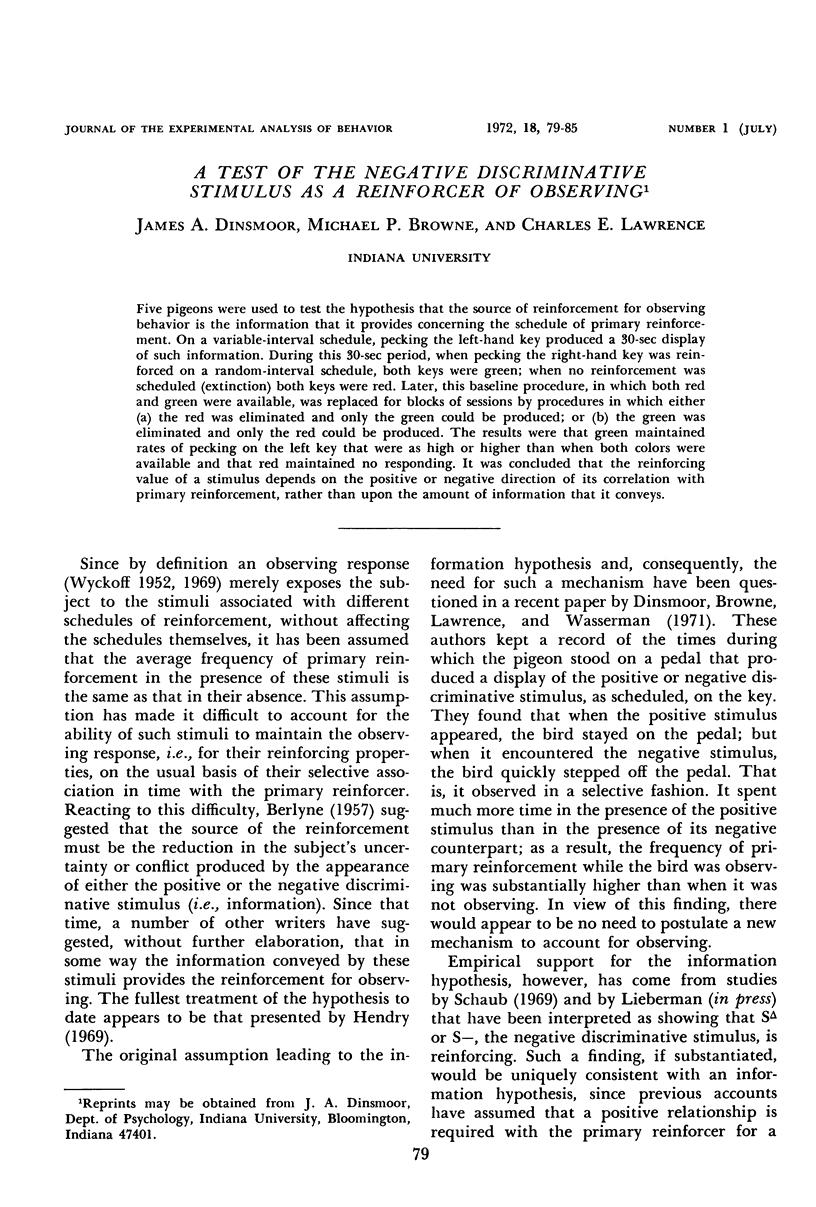
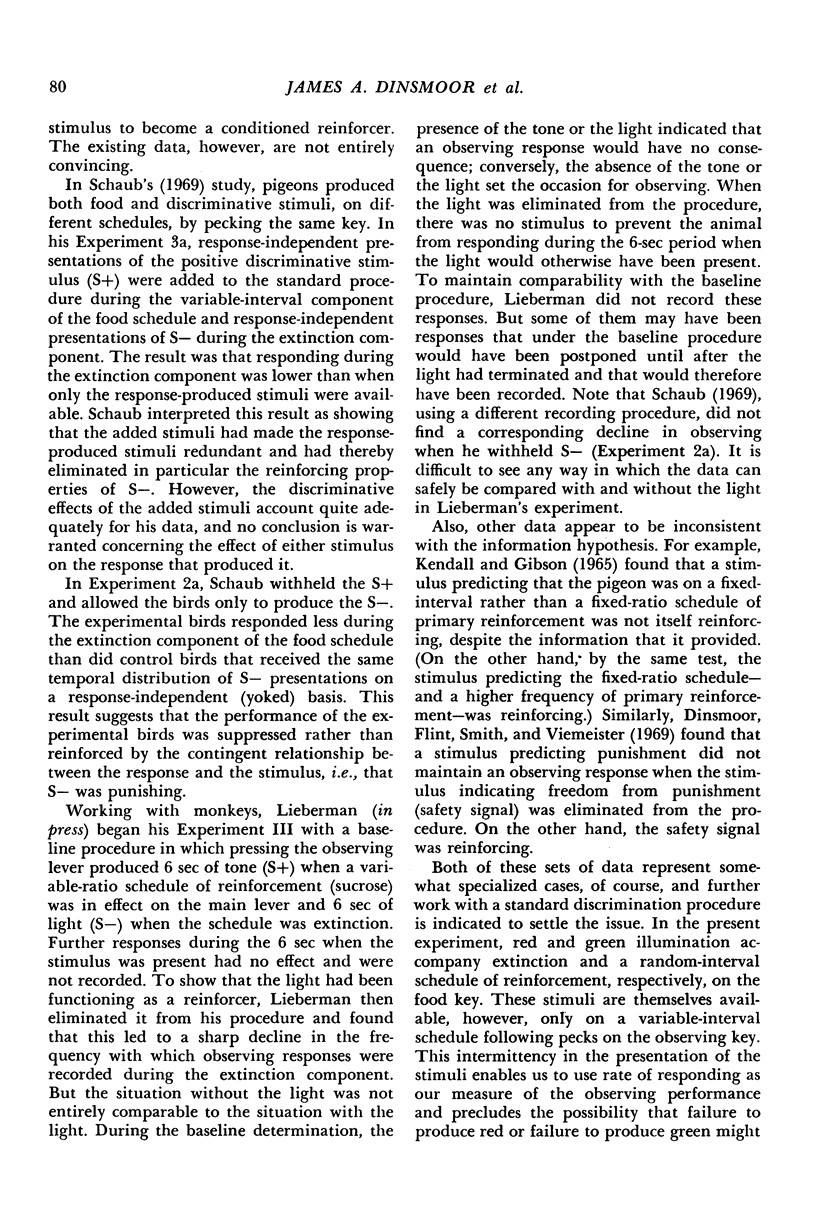
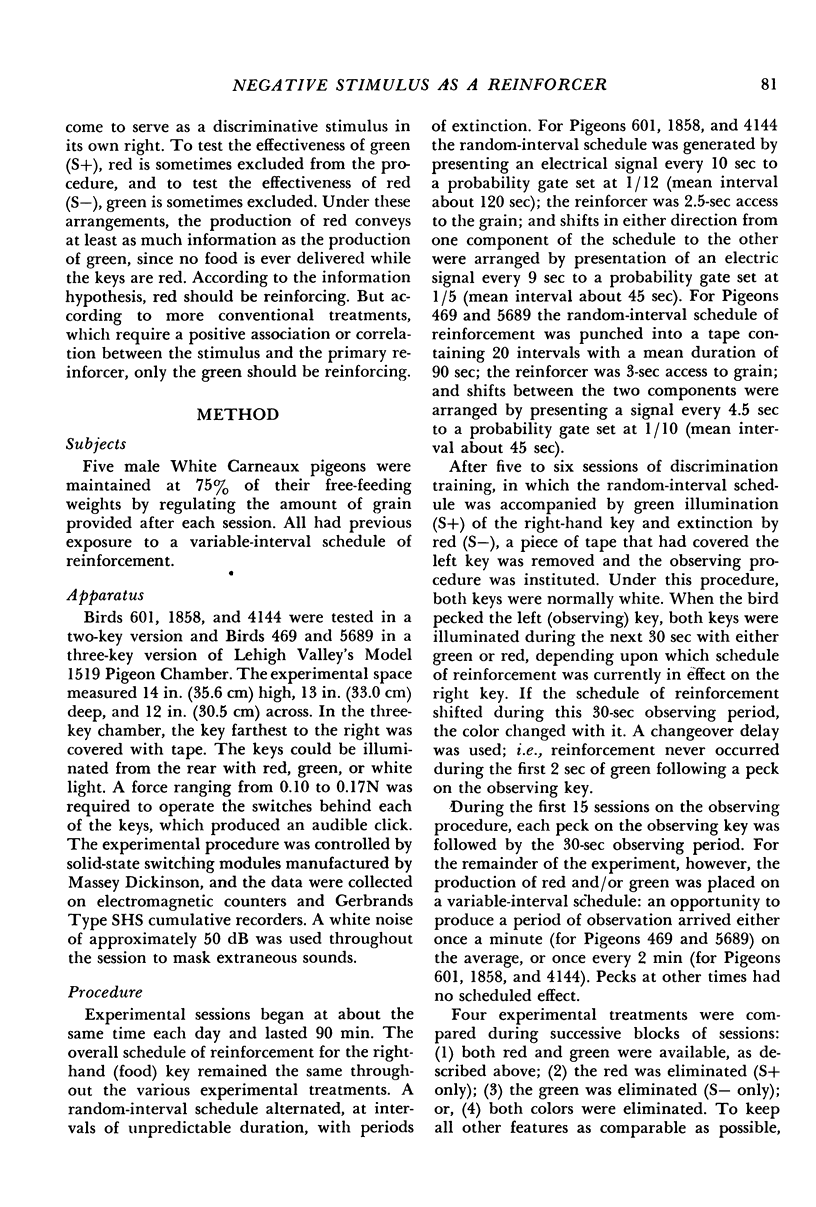
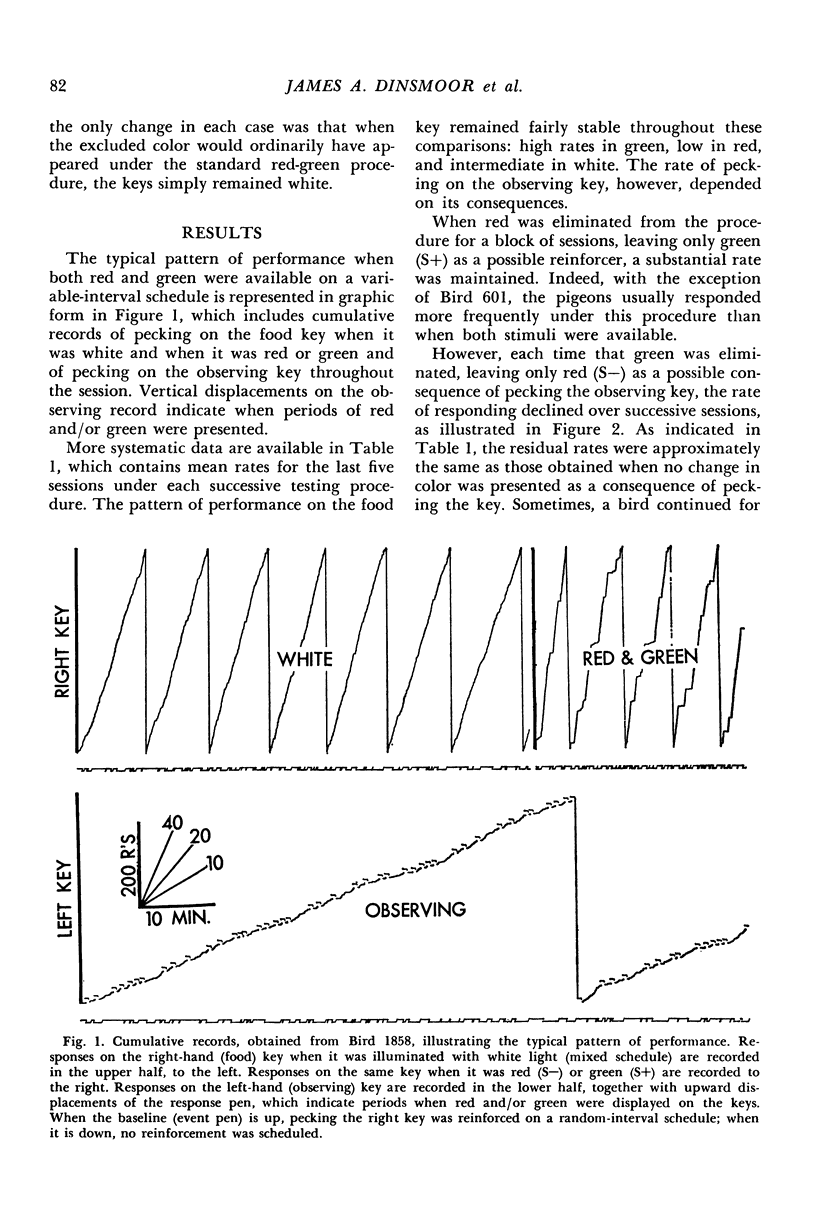
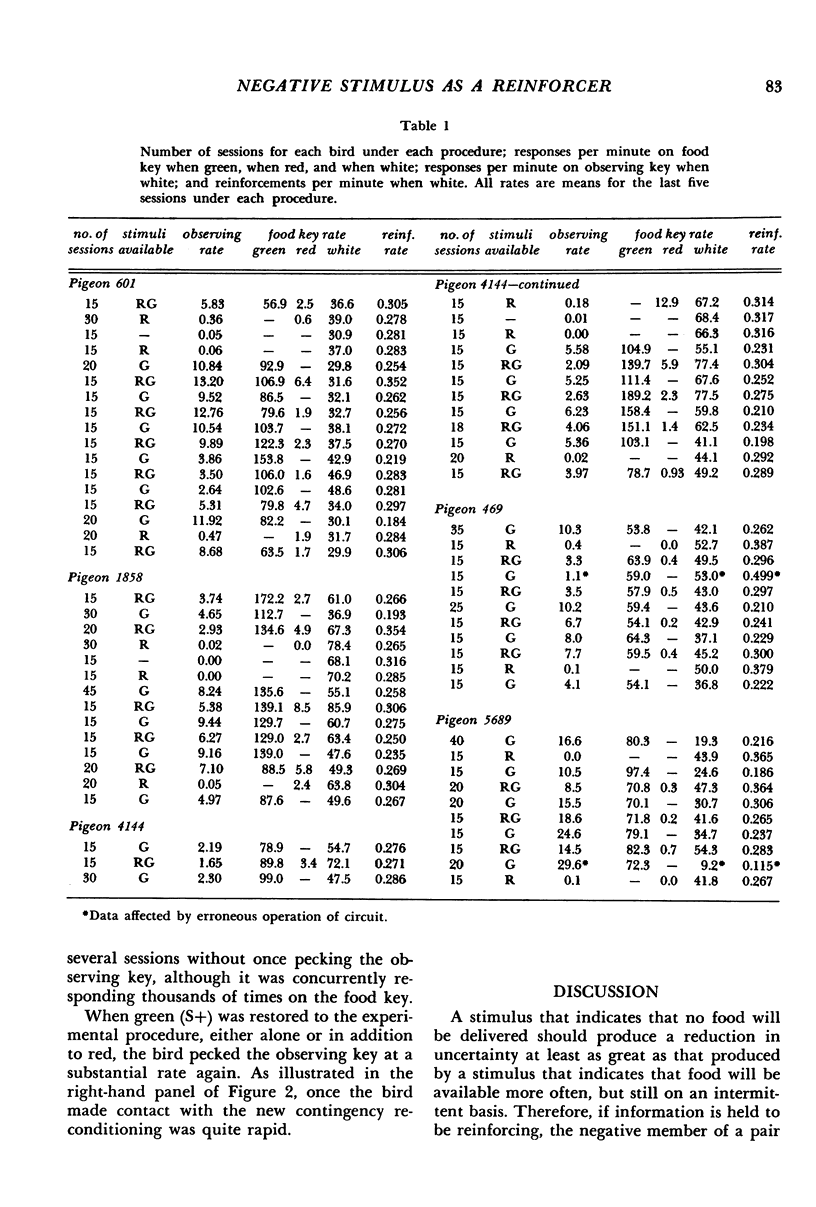
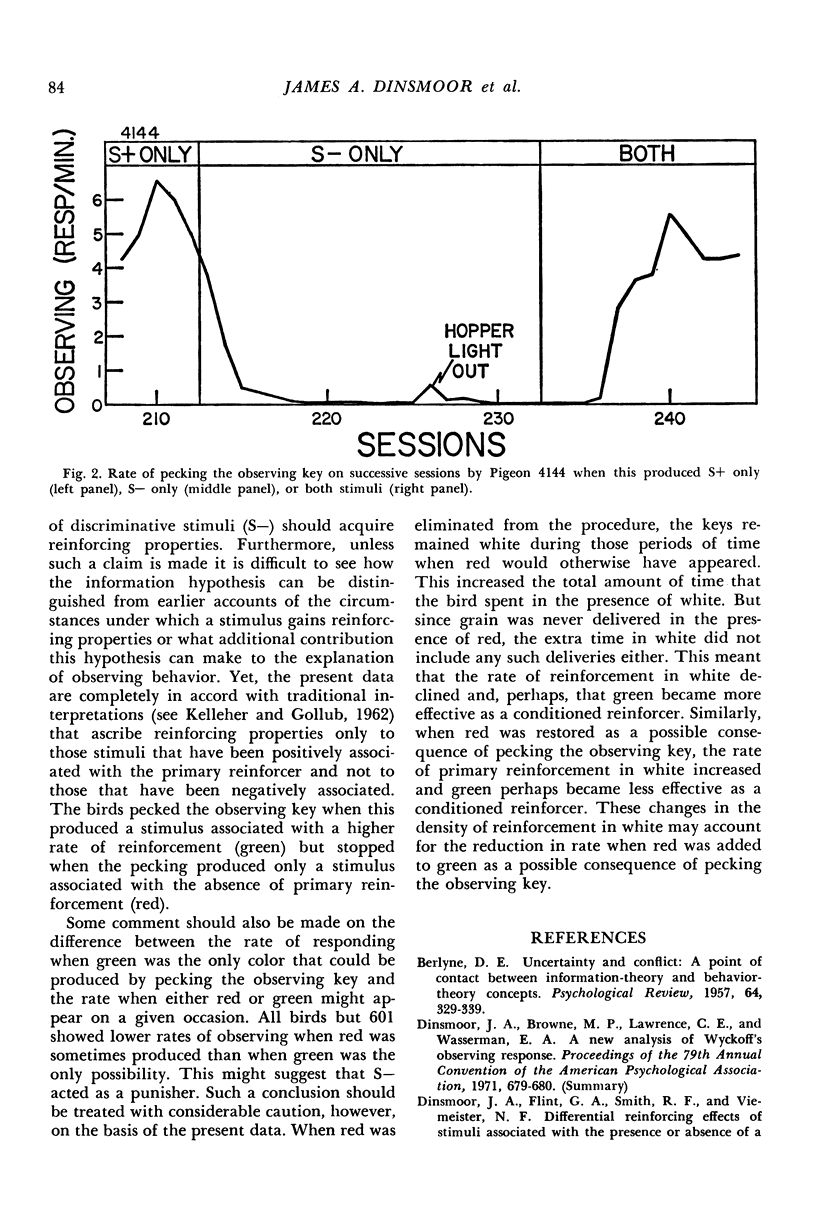
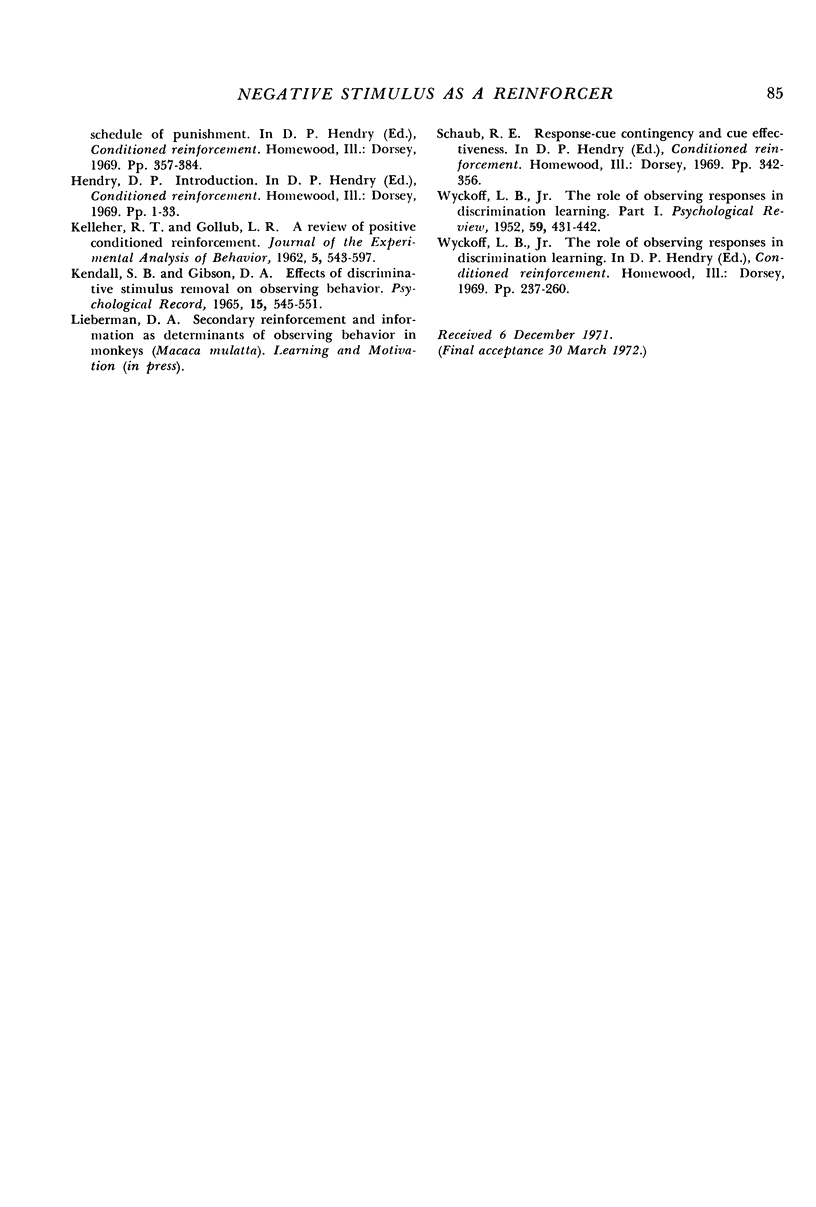
Selected References
These references are in PubMed. This may not be the complete list of references from this article.
- BERLYNE D. E. Uncertainty and conflict: a point of contact between information-theory and behavior-theory concepts. Psychol Rev. 1957 Nov;64, Part 1(6):329–339. doi: 10.1037/h0041135. [DOI] [PubMed] [Google Scholar]
- KELLEHER R. T., GOLLUB L. R. A review of positive conditioned reinforcement. J Exp Anal Behav. 1962 Oct;5:543–597. doi: 10.1901/jeab.1962.5-s543. [DOI] [PMC free article] [PubMed] [Google Scholar]
- WYCKOFF L. B., Jr The role of observing responses in discrimination learning. Psychol Rev. 1952 Nov;59(6):431–442. doi: 10.1037/h0053932. [DOI] [PubMed] [Google Scholar]


